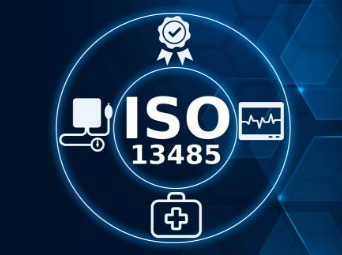-
SERVICES
- ISO 9001:2015
- ISO 14001:2015
- ISO 22000:2018
- ISO 27001:2022
- ISO 13485:2016
- ISO 50001:2018
- GMP Certification
- ISO 45001:2018
- HACCP
- ISO 17024:2012
- ISO 20000:2018
- ISO/IEC 17025:2017
- SA 8000:2014
- CE Mark
- ISO 37001:2016
- GDPR Certification
- ISO 41001:2018
- ISO 22301:2019
- IATF 16949:2016
- ISO 31000:2018
- ISO 21001:2018
- ISO 26000:2010
- ISO/IEC 27017:2015
- ISO/IEC 27018:2025
- ISO 28000:2022
- ISO 20121:2012
- ISO 17100:2015
- ISO 55001:2014
- ISO 22316:2017
- ISO 29993:2017
- ISO/IEC 17020:2012
- ISO 18788:2015
- PROCESS
-
TRAINING
- ISO 9001 Lead Auditor Training
- Internal Auditor Training
- Six Sigma Training
- Training Calander
- ISO 14001 Lead Auditor Training
- ISO 45001 Lead Auditor Training
- ISO 22000 Lead Auditor Training
- ISO 13485 Lead Auditor Training
- ISO 28000 Lead Auditor Training
- ISO 27001 Lead Auditor Training
- ISO 50001 Lead Auditor Training
- ISO 17024 Lead Auditor Training
- ISO 20000 Lead Auditor Training
- CLIENT
- ACCREDITATION
- INDUSTRY SECTOR
- ISO India
- RCPL Gulf
- NEWS
-
BLOGS
- ISO 14001:2015 Certification
- ISO 22000:2018 Certification
- ISO 27001:2022 Certification
- ISO 13485:2016 Certification
- ISO 50001:2018 Certification
- GMP Certification
- ISO 45001:2018 Certification
- ISO 9001:2015 Certification
- HACCP Certification
- GDPR Certification
- ISO 17024:2012 Certification
- ISO 20000:2018 Certification
- ISO/IEC 17025:2017 Certification
- SA 8000:2014
- CE Mark Certification
- ISO 22301:2019 Certification
- ISO 37001:2016 Certification
- ISO 41001:2018 Certification
- IATF 16949:2016 Certification
- ISO 31000:2018 Certification
- ISO 21001:2018 Certification
- ISO 26000:2010
- ISO 27017:2015 Certification
- ISO 28000:2022 Certification
- ISO/IEC 27018:2025 Certification
- ISO 20121:2012 Certification
- ISO 17100:2015 Certification
- ISO 55001:2014 Certification
- ISO 22316:2017 Certification
- ISO 29993:2017 Certification
- ISO/IEC 17020:2012 Certification
- ISO 18788:2015 Certification
- TESTIMONIALS
- RESOURCE
- INSPECTION






